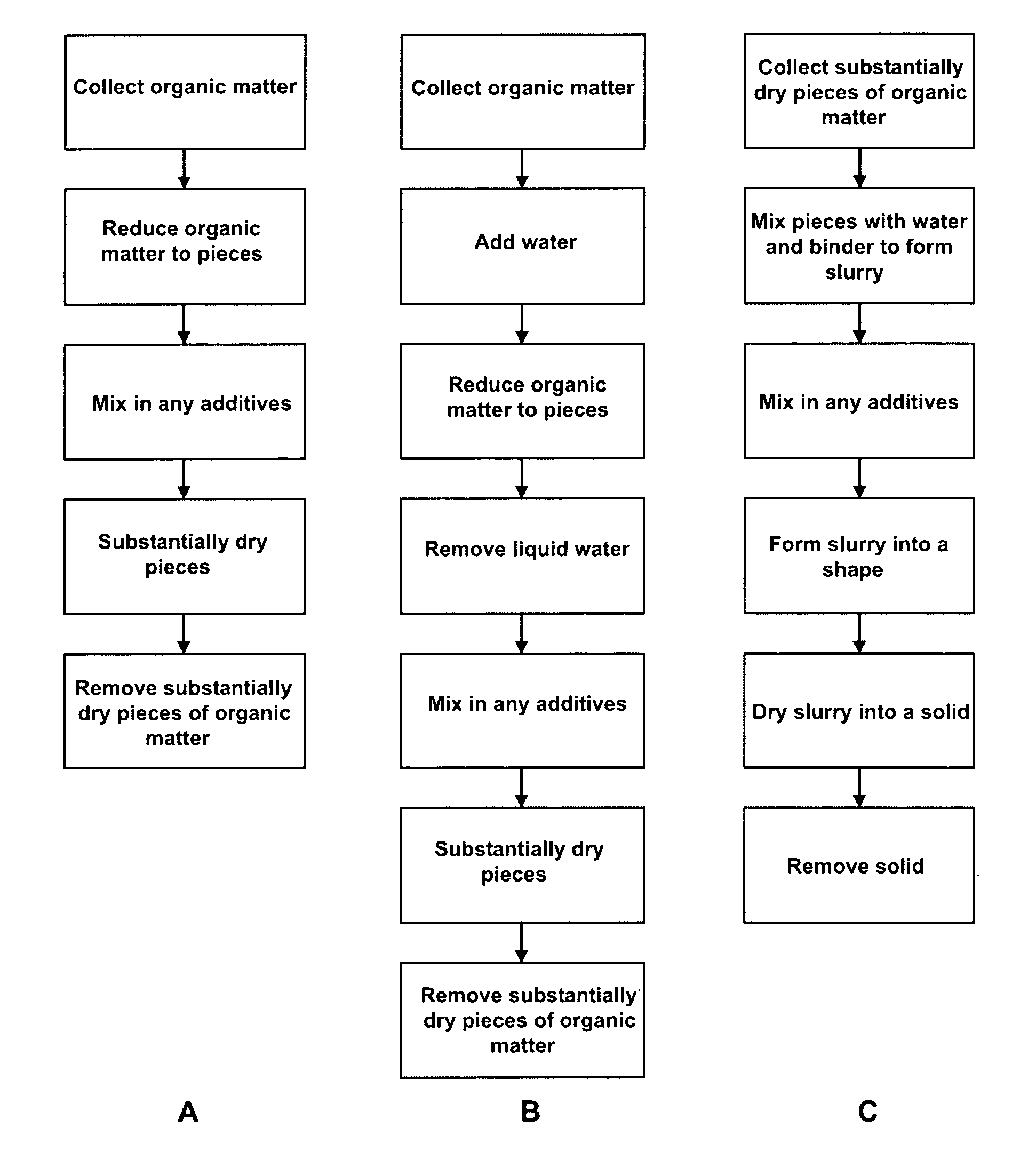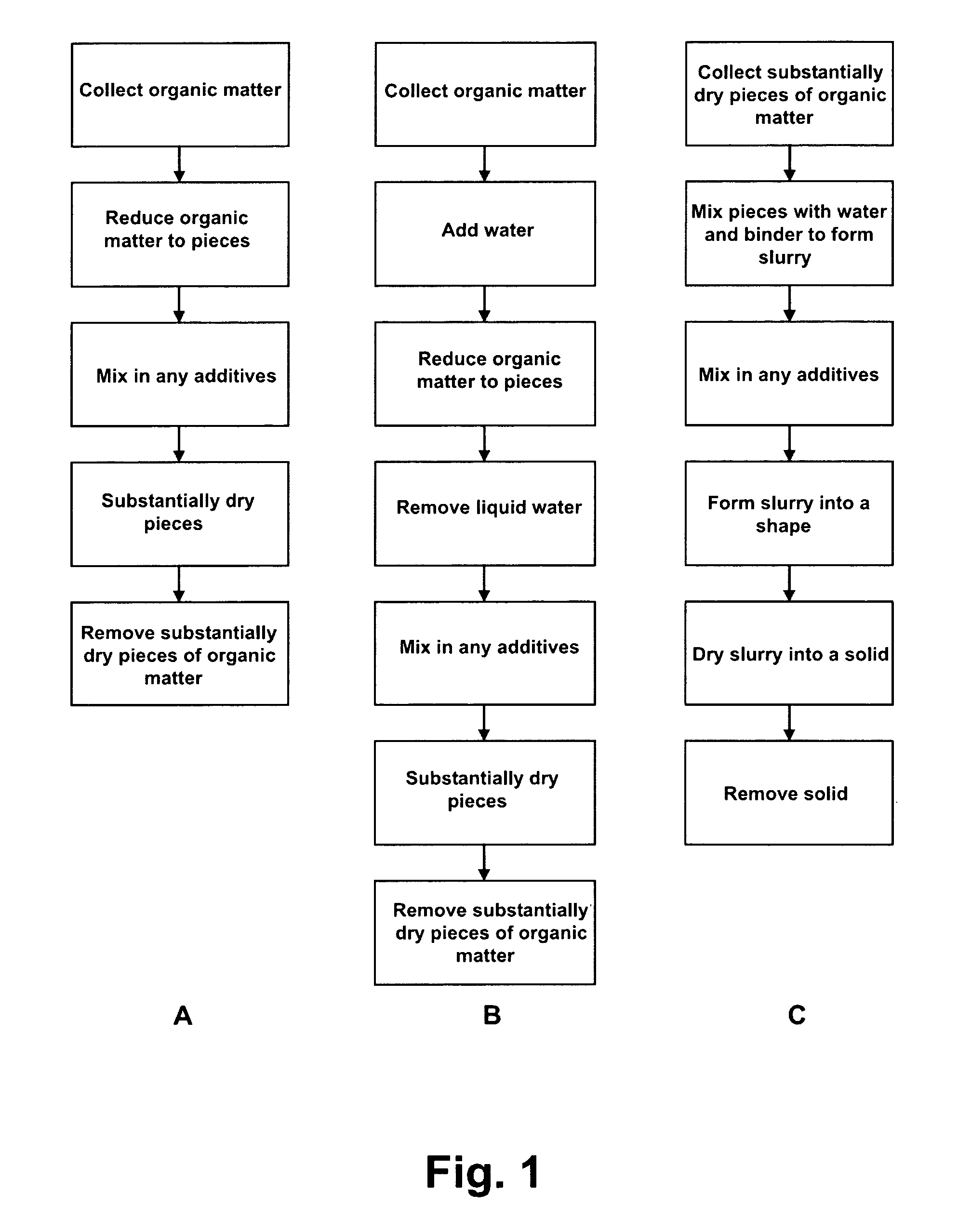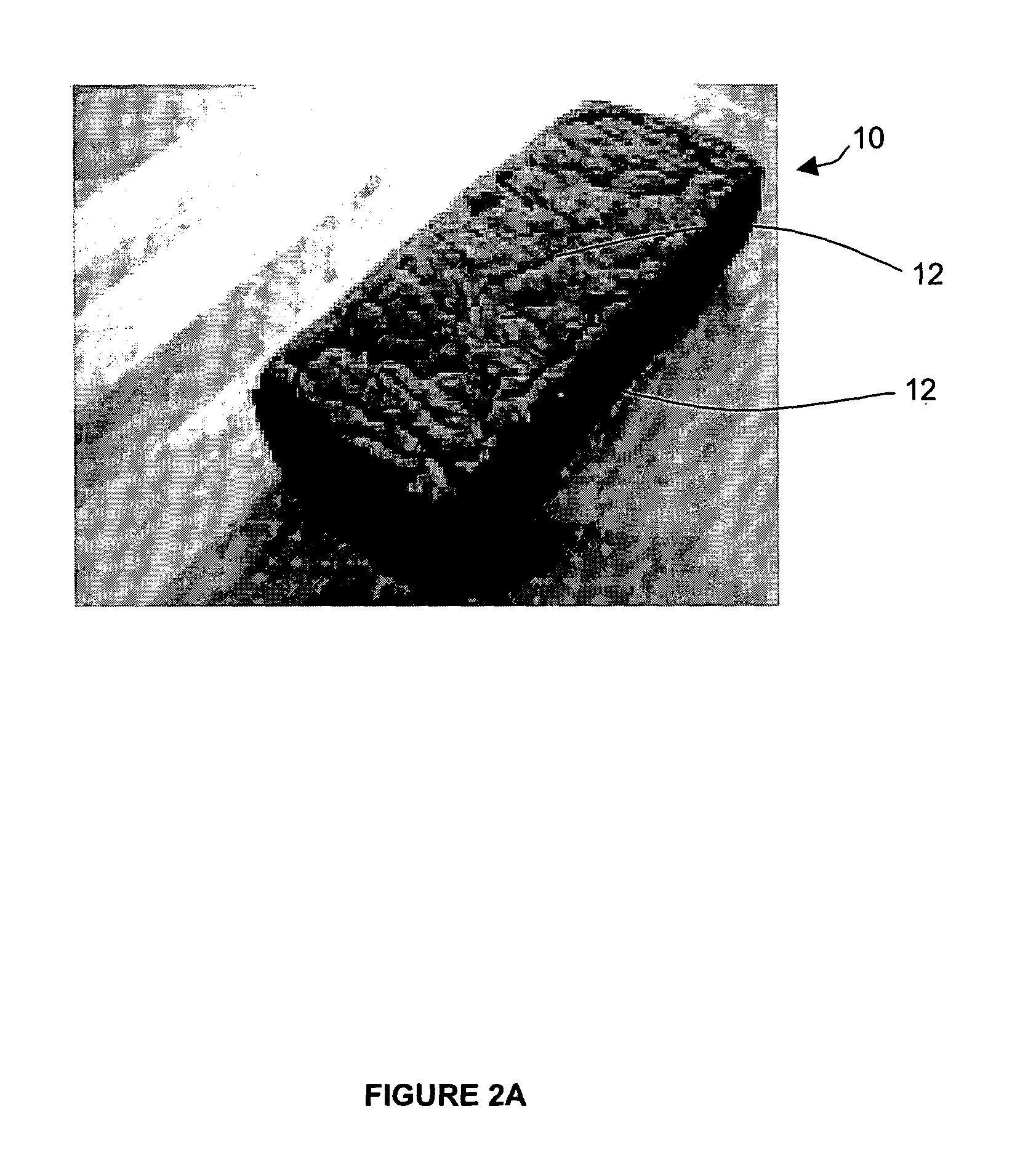Process for processing organic waste
a technology for processing organic waste and waste, applied in the direction of grading, turning machine accessories, drawing profiling tools, etc., can solve the problems of excessive use of water, inability to provide fully satisfactory solutions, harming the environment, etc., and achieve the effect of facilitating storage, collection or transportation
- Summary
- Abstract
- Description
- Claims
- Application Information
AI Technical Summary
Benefits of technology
Problems solved by technology
Method used
Image
Examples
Embodiment Construction
Outcomes and Methods for Producing Them
[0025]FIG. 1 illustrates a set of processes for converting organic matter into one or more outcomes. A first process is shown in column A. The process begins by collecting organic matter to be processed. The type of organic matter collected may vary according to the intended use of the outcome. For example, if the outcome will be used in private composting, the user may wish to collect only fruit, vegetable and cereal wastes typically composted at home. However, and particularly if the outcome will be used in municipal or commercial composting, the organic matter may include all food wastes as well as absorbing paper products such as paper towels, tissues or napkins.
[0026]The collected organic matter is reduced in size by separating it into pieces, for example pieces having no dimension greater than about 3 cm or no dimension greater than about 1 cm. The matter may be reduced by a variety of means including shredding, mashing, crushing, milling...
PUM
| Property | Measurement | Unit |
|---|---|---|
| time | aaaaa | aaaaa |
| size | aaaaa | aaaaa |
| size | aaaaa | aaaaa |
Abstract
Description
Claims
Application Information
 Login to View More
Login to View More - R&D
- Intellectual Property
- Life Sciences
- Materials
- Tech Scout
- Unparalleled Data Quality
- Higher Quality Content
- 60% Fewer Hallucinations
Browse by: Latest US Patents, China's latest patents, Technical Efficacy Thesaurus, Application Domain, Technology Topic, Popular Technical Reports.
© 2025 PatSnap. All rights reserved.Legal|Privacy policy|Modern Slavery Act Transparency Statement|Sitemap|About US| Contact US: help@patsnap.com



